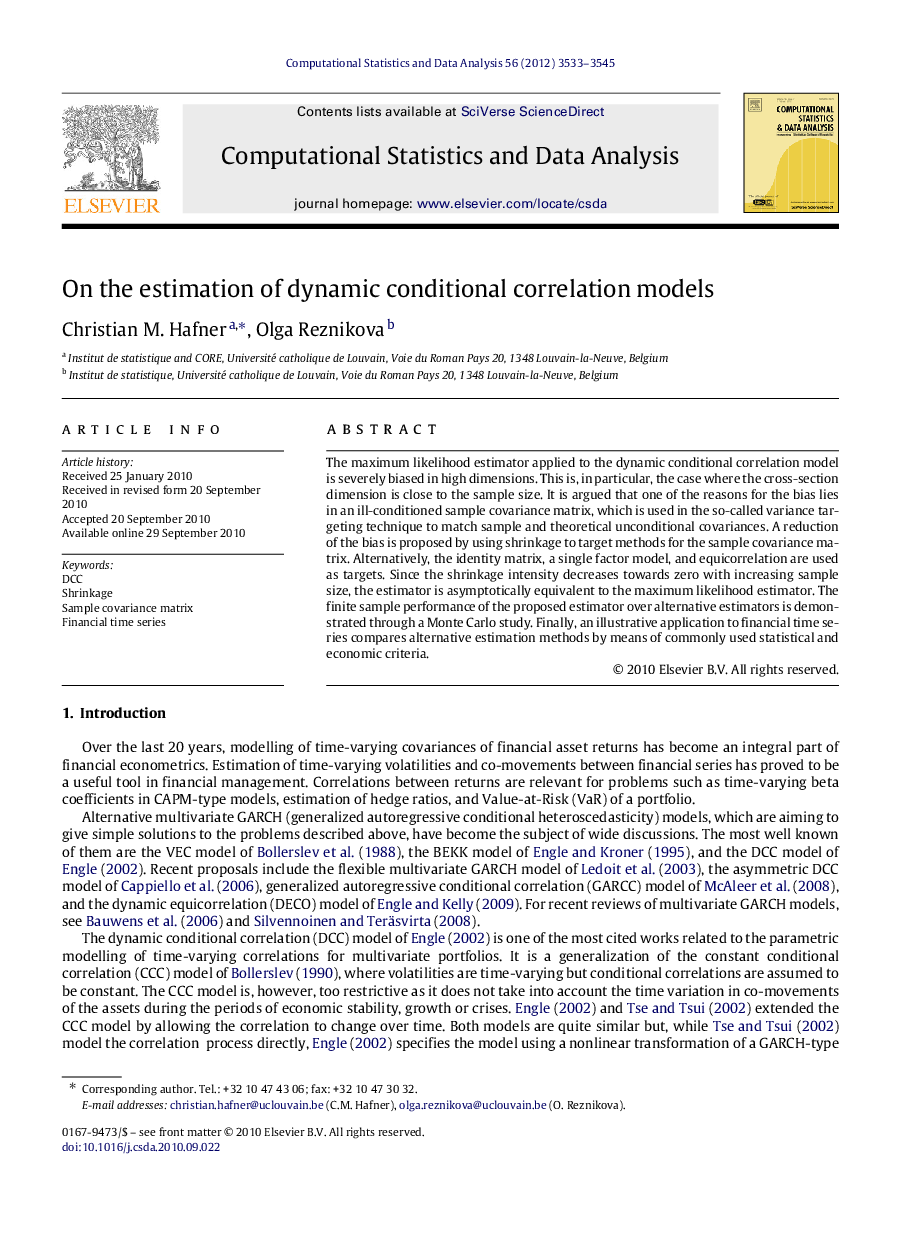| Article ID | Journal | Published Year | Pages | File Type |
|---|---|---|---|---|
| 417555 | Computational Statistics & Data Analysis | 2012 | 13 Pages |
The maximum likelihood estimator applied to the dynamic conditional correlation model is severely biased in high dimensions. This is, in particular, the case where the cross-section dimension is close to the sample size. It is argued that one of the reasons for the bias lies in an ill-conditioned sample covariance matrix, which is used in the so-called variance targeting technique to match sample and theoretical unconditional covariances. A reduction of the bias is proposed by using shrinkage to target methods for the sample covariance matrix. Alternatively, the identity matrix, a single factor model, and equicorrelation are used as targets. Since the shrinkage intensity decreases towards zero with increasing sample size, the estimator is asymptotically equivalent to the maximum likelihood estimator. The finite sample performance of the proposed estimator over alternative estimators is demonstrated through a Monte Carlo study. Finally, an illustrative application to financial time series compares alternative estimation methods by means of commonly used statistical and economic criteria.
